The Los Angeles River, an iconic waterway immortalized in film and song, has long been synonymous with a sprawling metropolis encased in concrete. Yet, beneath its artificial veneer lies a tale of potential—a narrative of transformation, resilience and innovation. As climate conditions change, large cities worldwide grapple with sustainable urban development. The Los Angeles River's evolution has the potential to be the catalyst for a better future.
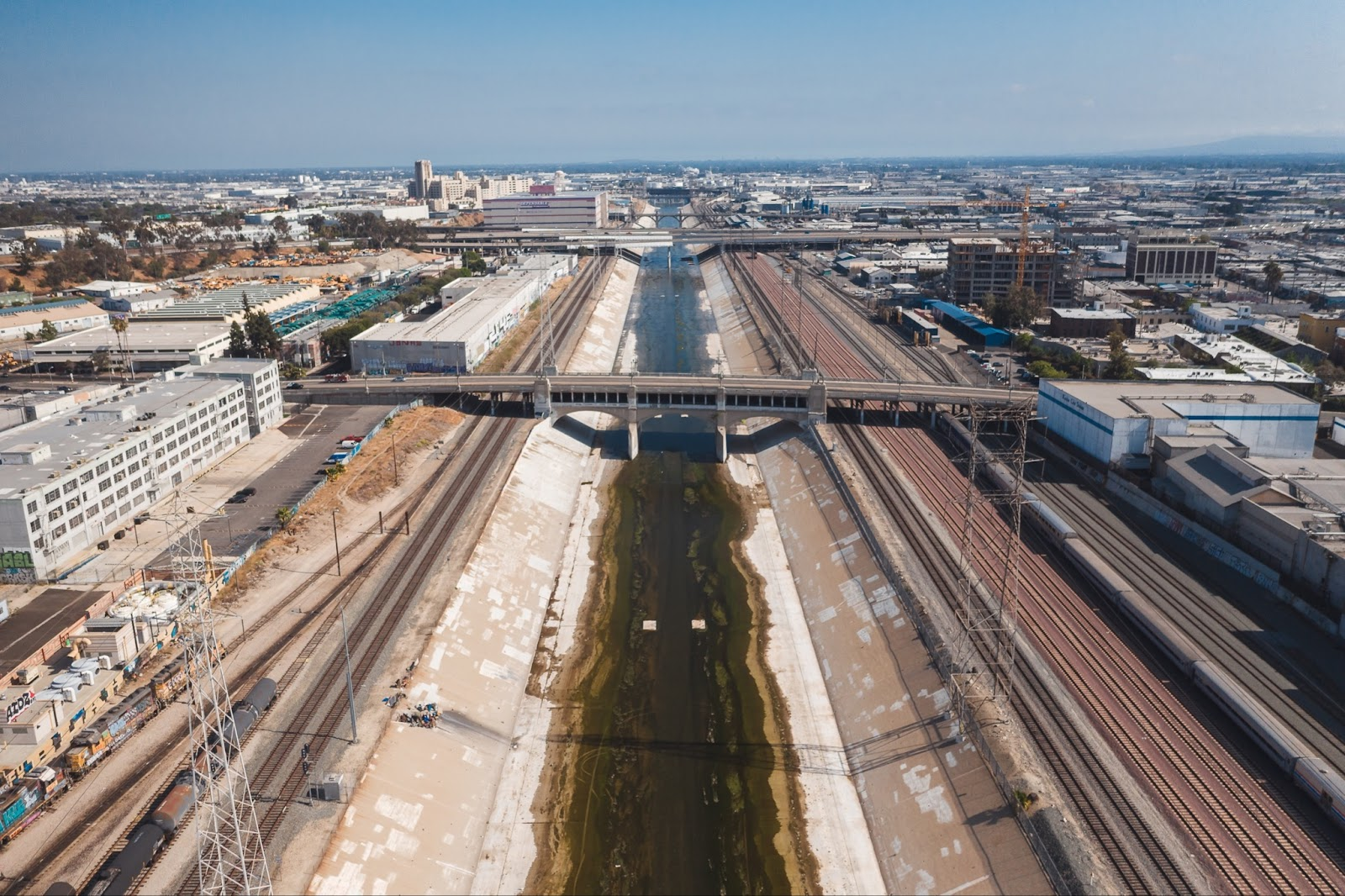
Photo provided by RDNE Stock Project
A river untamed
Originally known as the Paayme Paxaayt to indigenous peoples, the Los Angeles River was the centerpiece of a flourishing region. Once a meandering, seasonal watercourse that brought life to the region's indigenous Tongva people, the LA River has experienced a dramatic metamorphosis over the past century.
Pre-colonization, the river provided not only a vital source of water but also abundant fish, wildlife and plant resources, but it also shaped the Tongva's cultural practices, trade networks and spiritual beliefs, making it a rich and harmonious part of their daily existence.
When Spanish colonizers initially encountered the landscape, they described it as a riot of wildflowers, wild grapes, sage, rose bushes and sycamore trees. What stands between that distant memory of this basin and the concrete channel that slithers through the city today is a long and complex history.
Concrete confines
The arrival of Spanish conquistadors was the first of many historical events that led to the displacement and war on indigenous people in North America, along with their practices and ways of life.
In 1781, the great beauty and bounty of the Los Angeles River inspired the city’s founding on its banks. And in the 1930s, the city of Los Angeles had rapidly expanded into the areas of the river which were known to be prone to flooding. The conflict between the city’s heedless development and the river’s unpredictable nature led the region’s leaders to partner with the U.S. Army Corps of Engineers to confine all the river’s waterways with cement encasing, fixing its course within concrete and defining a new standard for water management in the region for generations to come.
The Los Angeles River's transformation into a concrete flood control channel was a testament to human engineering ingenuity. Stretching 51 miles through Los Angeles County, the river was lined with concrete to mitigate the risk of flooding and protect the growing city's infrastructure. The channelization project reshaped the river into a vast concrete trough, bereft of its former meanders and natural features.
However, this solution came at a steep price. The river's vibrant ecosystem was sacrificed, depriving it of its natural function. Instead of a dynamic environment teeming with wildlife, the river became a lifeless, barren expanse, hidden beneath overpasses and forgotten by the bustling city above.
“There is reason to critique where we are today, especially when you compare us to other major cities around the U.S. and internationally,” said Elizabeth Reid-Wainscoat, urban wildlands campaigner for the Center for Biological Diversity, in an interview with Kinute.
Through the lens
Hollywood films have played a significant role in shaping the public's understanding of the river. Movies have often portrayed the river as a barren, concrete channel, serving as a backdrop for car chases and dramatic scenes. These portrayals have reinforced the perception of the river as an urban wasteland, devoid of natural beauty and ecological significance. This representation has overshadowed the river's potential as a vibrant ecosystem and a cultural landmark.
“The river is seen in films like the Terminator, Grease, and in all these movies,” Dennis Mabasa, chief operating manager of Friends of the LA River, told Kinute. “And what we are seeing right now is a critical knowledge gap.”
However, organizations like FOLAR are setting out to challenge these cinematic stereotypes and encourage a more nuanced appreciation of its evolving role in the urban landscape. There is a transformative power of story, and these thought-leaders are collectively examining misconceptions perpetuated by previous portrayals and setting out to rewrite the narrative of the river today. Through this work, the river is beginning to undergo a remarkable transformation towards an ecological oasis.
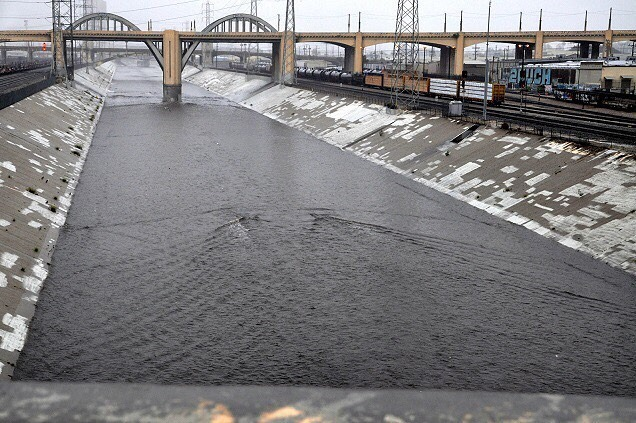
Concrete Basin of the LA River. Provided by Friends of the LA River
Forgotten potential
As a result of misconception and lack of education, most Angelos do not know that 88% of water is imported to LA everyday—more than 430 million gallons. When the U.S. Army Corps of Engineers built the channel, its sole purpose was to drain water through the city and to the ocean as quickly as possible to prevent flooding (a natural occurrence for alluvial rivers). Today, 80% of valuable rainwater is still dumped into the ocean every year.
As it exists today, the concrete basin limits the river's natural flow, inhibits groundwater recharge, and hampers the ecosystem's ability to thrive. The area suffers from issues of pollution, including urban runoff and contaminants, which have a detrimental impact on water quality and the health of aquatic life. The lack of accessible green spaces and recreational opportunities along the river also poses challenges for communities seeking nature connections and outdoor activities.
Though the river spans many neighborhoods from the headwaters in Simi Valley to the Pacific Ocean in Long Beach, most people consider it to be a piece of infrastructure rather than a living, breathing river. It has remained an overlooked relic of urban development, dismissed as a lost cause by many. Its confines are emblematic of a city more concerned with flood control than ecological preservation or community engagement.
Yet, amidst the concrete, signs of untapped potential began to emerge. Grassroots organizations and community activists tirelessly advocated for the restoration of the river, arguing that it held the key to a more sustainable, resilient, and connected Los Angeles.
“Climate change in LA and all over the world is an equity issue,” said Mabasa. “The LA River, we believe, is LA's greatest tool for climate resiliency."
FOLAR and others promote the fact that living rivers and healthy watersheds provide profound benefits to the cities they nurture. They provide water supplies, filter out pollutants, build coastlines, provide critical habitat, sequester carbon and other greenhouse gasses, regulate floodwaters and cool temperatures.
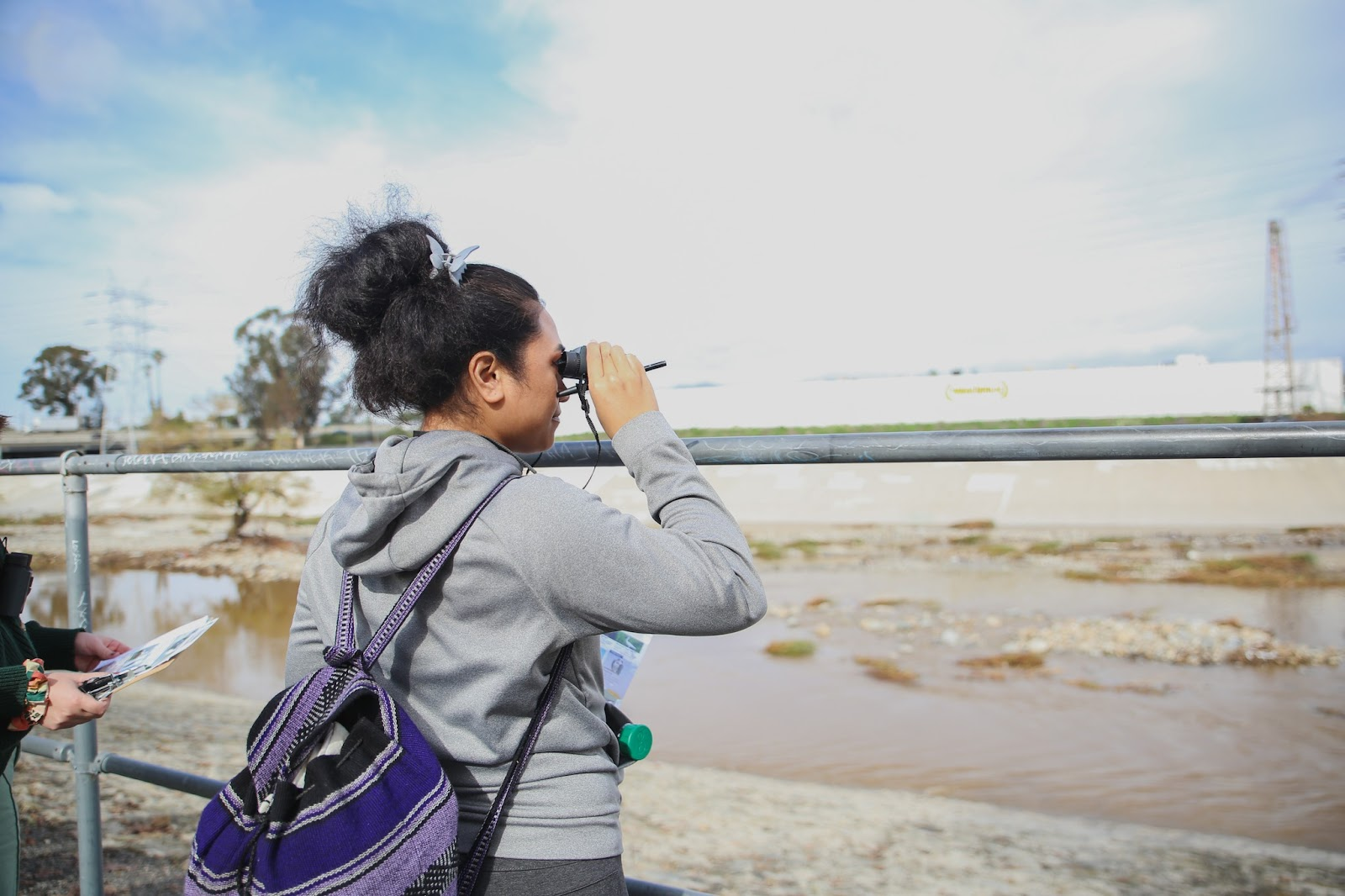
Watching for wildlife. Photo provided by Friends of the LA River
Unearthing potential
In recent years, the tide has started to turn for the LA River. It is experiencing a renaissance as stakeholders from all sectors are coming together to explore its untapped potential.
“The LA River can be complicated—particularly as the effects of climate change create more urgency to solve the environmental and equity issues facing LA,” Mabasa explained. “But what we often see is that people don't fully understand the potential power of the river to help us solve these issues.”
This transformation is driven by a confluence of factors—climate change, urbanization pressures and a growing awareness of the need for nature-based solutions in cities. As the effects of climate change intensify, cities worldwide are grappling with the challenges of water management. The Los Angeles River's revival offers a valuable lesson in climate resilience.
One of the most striking aspects of the Los Angeles River's resurgence is its potential for ecological restoration. Activist organizations are coming together to focus on gradually replacing the concrete lining with natural vegetation, creating habitat for native wildlife and improving water quality. By restoring the river's natural floodplain and enhancing its capacity to absorb and filter stormwater, the city has the potential to not only mitigate the risk of flooding but also replenish its groundwater reserves.
This dual-purpose approach aligns with modern climate adaptation strategies.
“There have been flow analysis studies that show that Los Angeles, through different stormwater capture and wastewater management, could be self-sustaining on local water. We just have to tap into and better support the natural process,” Reid-Wainscoat said.
“When it rains in Los Angeles, the water goes directly into the storm drains, into the LA river, and then directly to the ocean. We believe storm water capture is one of the answers to the complex climate issue the west faces. We could use soft bottom locations to infiltrate the ground water. And if we have a higher ground water table, then we could potentially use that water."
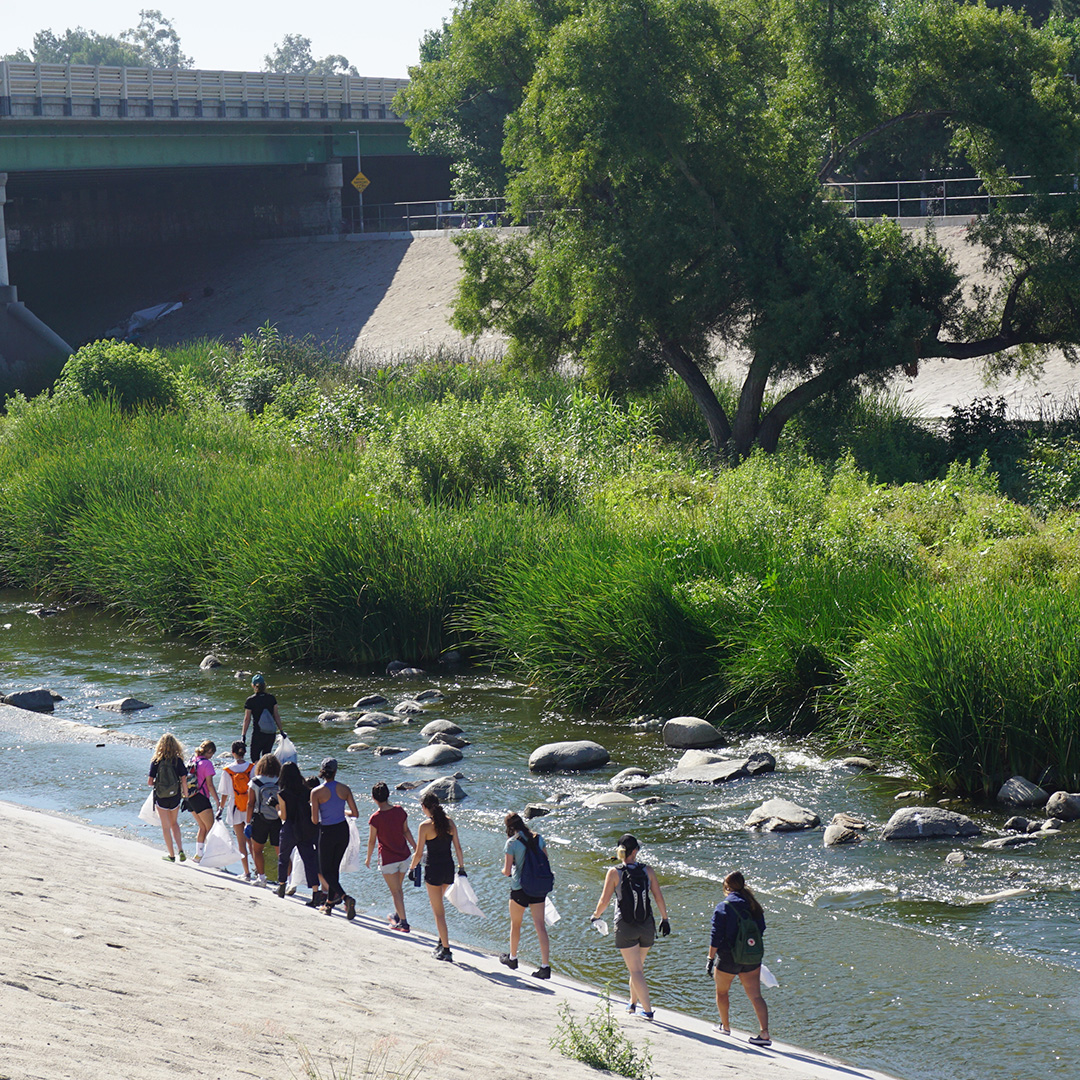
Local Community Efforts. Provided by Friends of the LA River
Community connectivity
In the tapestry of life near the Los Angeles river, vibrant communities weave a rich mosaic of diversity. Nestled along its banks, people of all walks of life grow families and run businesses. The state of the river basin influences their daily existence and shapes their collective experiences.
Unlike the native peoples that lived on the shorelines of the river long ago, the reality of those adjacent to the basin today are shaped by lawmakers and city planners. These architects of urban landscapes possess the power to influence the river's fate and potentially reimagine its concrete confines.
In 2022, conservation groups LA Waterkeeper and the Center for Biological Diversity filed a lawsuit over faulty environmental review processes on the latest revitalization effort, the LA River Master Plan by Frank Gehry. What may first appear as a symbol of hope for the artery of the city actually has little to do with naturalization or ecological restoration, and environmental firms such as these continue to unite together to advocate for the river and the communities who live alongside it.
Urban transformation on the horizon
Perhaps the most heartening aspect of the Los Angeles River's transformation is its potential impact on the community, and the role these organizations play in protecting and building a better future for the river and Angelenos.
The benefit of a concrete river as it stands today is singular—it swiftly transports rainwater out of the city and into the ocean, yet deprives the city of local water supply and essential ecosystem services. We now understand the critical need for protecting floodplains as part of a reliable, regenerative strategy.
In the face of drought, collecting and treating this water for local consumption and use could be an essential tool.
The LA River serves as a reminder of how rivers are meant to flow, and how humans once revered and respected their natural ways. The wisdom of indigenous people of the region provide important insights as we collectively seek re-connection to their practices and approaches.
In modern times, the once-forgotten river could serve as a hub for community engagement and connection. Recreational spaces along the river's banks could bring people back to the water's edge, providing opportunities for outdoor activities, cultural events, and education. The river could once again symbolize community resilience, drawing people from diverse backgrounds to unite in their passion for its restoration.
Innovations in water management are also at the heart of the Los Angeles River's revival. By incorporating green infrastructure, permeable surfaces and decentralized water treatment systems, the city is at an impetus to redefine its approach to water management.
The river's journey from concrete channel to ecological oasis could serve as a blueprint for cities worldwide. Its evolution could embody the principles of sustainable urban development, offering valuable insights into how cities adapt to the challenges of the 21st century. The reimagining of urban spaces as interconnected ecological systems challenges traditional notions of flood control and infrastructure. The river's resurgence can highlight the importance of integrating natural solutions into city planning, prioritizing climate resilience, and fostering community engagement.
Together, we can forge a path towards a revitalized river, one that harmonizes with nature, fosters social equity, and becomes a vibrant symbol of unity. Movements like this in LA and cities across the map can serve as a catalyst for change as we strive to create a future where the earth thrives, we embrace the natural ways of ecology, we honor cultural heritage, and turn cities into sanctuaries for all who call it home.
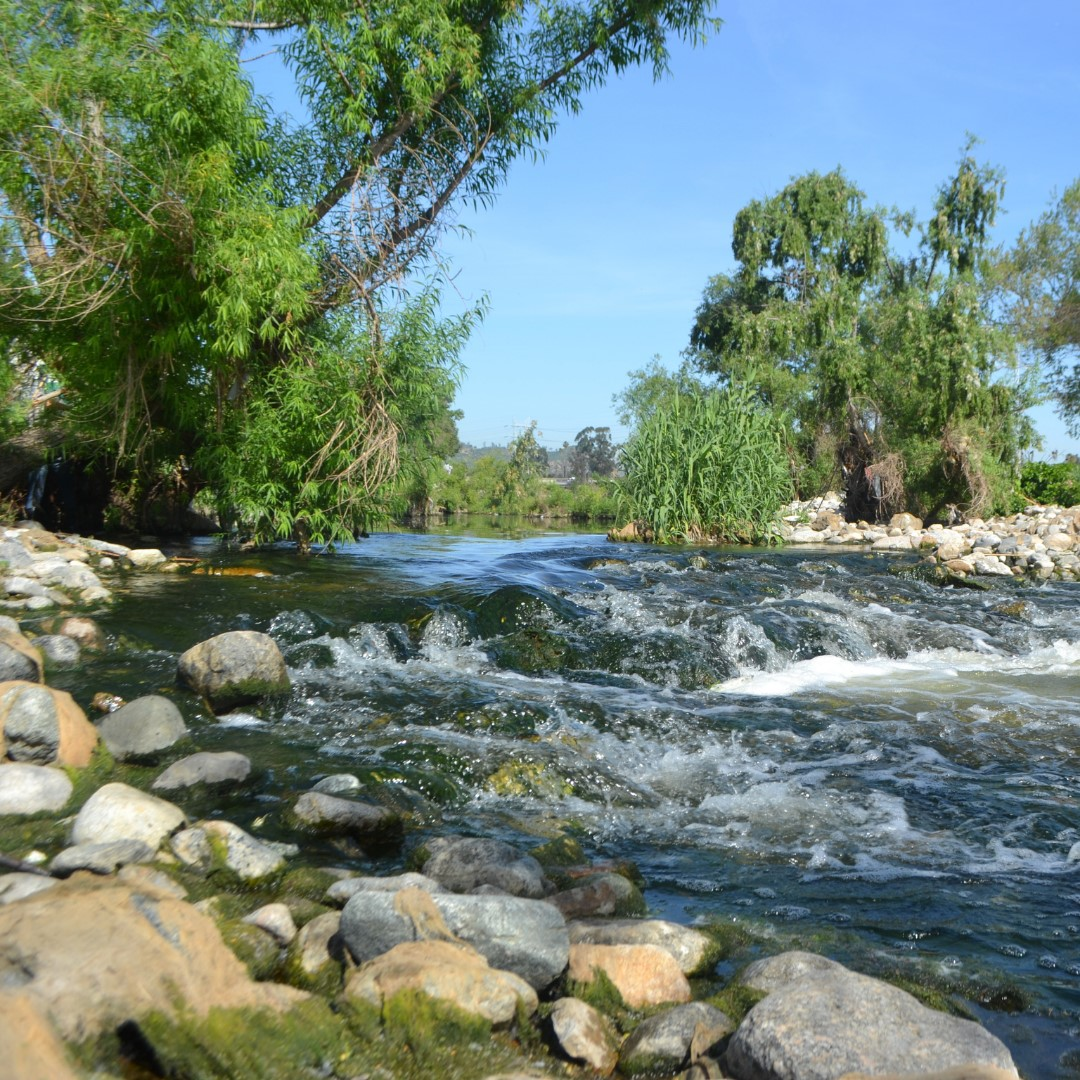
A flowing and thriving LA River. Provided by Friends of the LA River
A sustainable future
The Los Angeles River's evolution is a testament to the power of human innovation, community advocacy, and ecological restoration. It stands as a symbol of resilience in the face of urbanization and climate change, a beacon of hope for cities striving to balance growth with sustainability.
As we trace the river's journey from a channel of concrete to a potential model for innovative water management strategies, we unearth its untapped potential.
The Los Angeles River serves as a potential blueprint for cities worldwide, showcasing how ecological restoration, flood control, and community engagement can create a climate-resilient urban oasis. It reminds us that even in the most unlikely places, nature's potential can be unearthed, and a brighter, more sustainable future can emerge.
